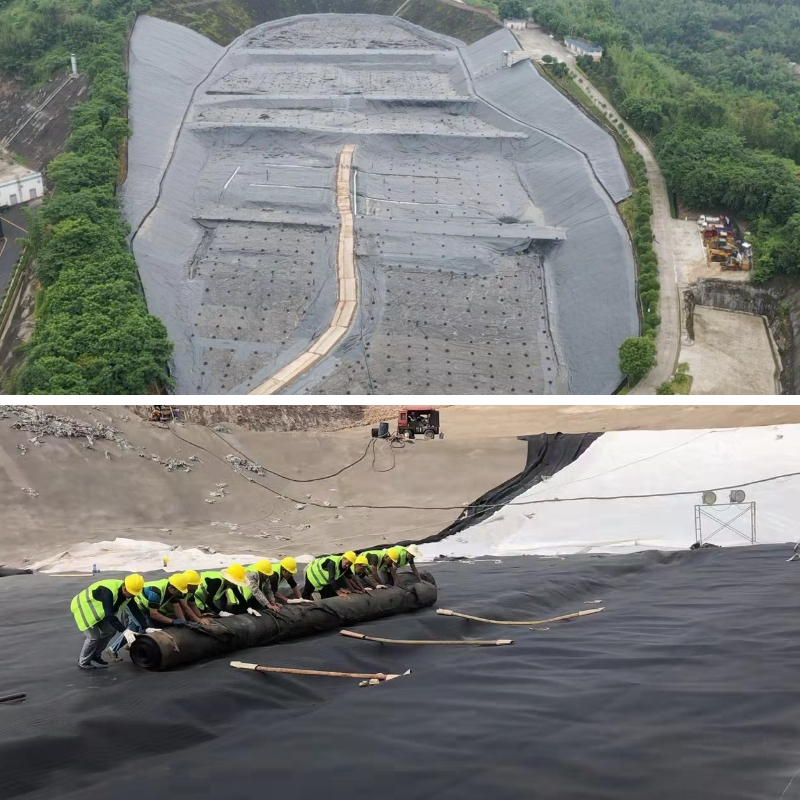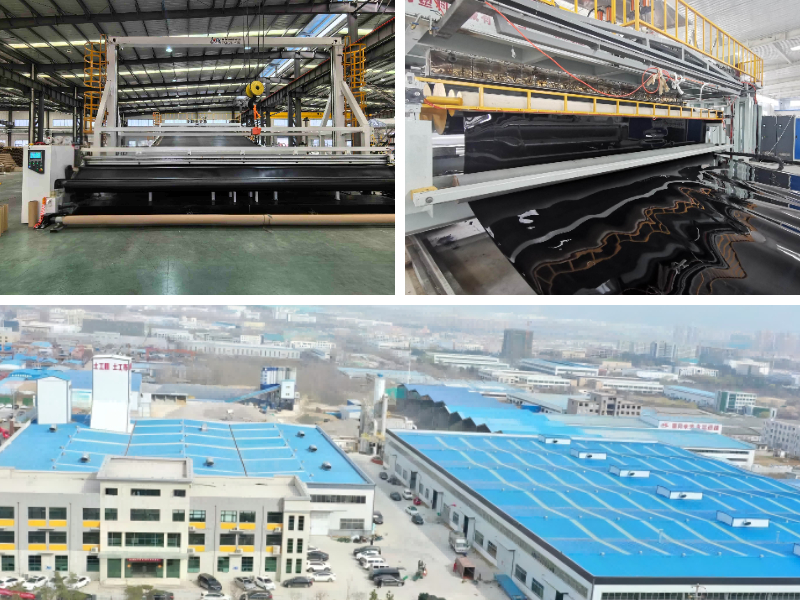How Geomembrane Liners Improve Safety in Chemical Storage Ponds
Chemical storage ponds are quintessential factors in industrial operations, dealing with the entire aspect from corrosive acids to toxic waste. However, these services pose good sized risks if now no longer exceptional contained—leaks can contaminate soil, groundwater, and shut by way of ecosystems, while moreover endangering worker safety and public health. This is the area geomembrane science steps in, serving as a robust barrier that transforms unstable storage into a controlled, impenetrable process. Among the most amazing selections in this category is the hdpe geomembrane liner, a high-performance material designed to stand up to harsh chemical environments. In this article, we’ll find out how geomembrane liners, more often than not HDPE variants, beautify safety in chemical storage ponds, from stopping leaks to making certain long-term reliability.
The Hidden Risks of Unlined or Poorly Lined Chemical Ponds
Before delving into the benefits of geomembrane liners, it’s necessary to apprehend the dangers of insufficient containment. Chemical storage ponds except perfect lining are prone to percolation—the gradual seepage of chemical compounds via soil layers. Over time, this can lead to groundwater contamination, which is now now not entirely excessive priced to remediate alternatively moreover poses long-term health risks. For example, heavy metals or carcinogenic sources can enter consuming water sources, affecting communities for decades.
Even ponds with frequent liners (such as concrete or clay) face challenges. Concrete is susceptible to cracking due to chemical erosion, thermal expansion, or ground movement, developing pathways for leaks. Clay liners, at the same time as natural, are inconsistent in density and can fail under heavy loads or prolonged publicity to aggressive chemicals. These mess ups typically go undetected until enormous damage has occurred, making reactive measures some distance higher expensive than proactive prevention.
This is the location geomembrane liners come to be indispensable. Unlike rigid or porous alternatives, geomembranes are engineered to create an impermeable barrier that adapts to environmental adjustments while resisting chemical attack.
Why HDPE Geomembrane Liner Stands Out for Chemical Containment
When it comes to chemical storage, no longer all geomembranes are created equal. HDPE geomembrane liner (high-density polyethylene) is largely considered as the gold sizeable for chemical containment, and for fantastic reason. Its molecular form is dense and uniform, making it particularly resistant to corrosion, oxidation, and degradation thru most industrial chemicals—including acids, bases, solvents, and hydrocarbons.
Unlike flexible PVC or rubber liners, which can swell or smash down when uncovered to nice chemicals, HDPE continues its integrity even in aggressive environments. This resistance is in addition superior through elements like UV stabilizers (for out of doorways ponds) and antioxidants, making certain the liner stays lengthy lasting for decades. Additionally, HDPE is non-toxic and inert, which potential it won’t react with saved chemical compounds or leach risky materials into the environment—a crucial attribute for compliance with environmental regulations.
The flexibility of HDPE geomembrane is each and every different key advantage. It can conform to the structure of the pond, consisting of irregular contours or slopes, growing a seamless barrier that eliminates inclined points. When pinnacle welded the use of warmness fusion techniques, HDPE panels shape bonds accelerated than the material itself, leaving no gaps for leaks to occur. This stage of reliability is unmatched by using the usage of many ordinary lining methods.
How Geomembrane Liners Prevent Leaks and Contamination
The integral characteristic of any geomembrane liner in a chemical storage pond is to give up leaks, and it does so via a mixture of fabric science and engineering design. Here’s a nearer appear to be at how this works:
Impermeability: The core obtain of geomembrane liners is their near-complete impermeability. HDPE geomembrane, in particular, has a permeability rate measured in nanometers per second—orders of magnitude minimize than clay or concrete. This potential even the smallest molecules of chemical compounds can not leave out through the liner, preserving contaminants contained inner the pond.
Seamless Installation: Modern set up techniques for HDPE geomembrane liner make positive a continuous barrier. Heat fusion welding, the utilization of heat air or extrusion methods, fuses adjoining panels together, creating a bond that is as sturdy as the liner itself. Quality manipulate checks, such as pressure making an attempt out or vacuum checking out of seams, verify that no gaps exist, minimizing the hazard of leaks.
Resistance to Physical Stress: Chemical storage ponds are subject to a wide variety of stresses, collectively with temperature fluctuations, water pressure, and the weight of saved materials. HDPE geomembrane is designed to face up to these forces except cracking or tearing. Its flexibility lets in it to make higher and contract with temperature changes, even as its immoderate tensile power resists punctures from rocks or particles at the pond’s base.
Compatibility with Secondary Containment: In high-risk facilities, geomembrane liners are often used as section of a secondary containment system. If a predominant tank or form fails, the geomembrane-lined pond acts as a backup, containing the spill and stopping it from spreading. This redundancy is a cornerstone of safety protocols in industries like oil and gas, mining, and chemical manufacturing.
By addressing these integral areas, geomembrane liners create a multi-layered safety in opposition to leaks, notably reducing the risk of soil and water contamination.
Long-Term Durability: Reducing Maintenance and Replacement Risks
Safety in chemical storage isn’t actually about stopping on the spot leaks—it’s moreover about making certain long-term reliability. Frequent renovation or premature choice of liners can disrupt operations, expand costs, and introduce transient protection risks at some factor of installation. HDPE geomembrane liner excels in this area, imparting terrific sturdiness that minimizes these concerns.
HDPE geomembrane is resistant to natural degradation, that ability it won’t be broken down through the usage of micro organism or fungi in the soil. It moreover withstands UV radiation (when stabilized), making it terrific for out of doorways ponds uncovered to sunlight. In fact, accurate hooked up HDPE liners have a issuer existence of 30+ years in most chemical storage applications, a lengthy way outlasting concrete (which might also moreover require repairs every and each and every 10–15 years) or clay (which can degrade over time due to chemical exposure).
This sturdiness interprets to minimize lifecycle expenses and fewer chances for human error at some factor of maintenance. Unlike concrete, which can also additionally require patching or resurfacing—processes that can rapidly expose the environment to chemicals—HDPE geomembrane requires minimal upkeep. Routine inspections (using non-destructive making an attempt out methods) can find out practicable issues early, enabling for centered repairs except disrupting the whole system.
For industries jogging below strict regulatory standards, the long-term reliability of HDPE geomembrane liner moreover simplifies compliance. Consistent normal overall performance over many years functionality fewer violations, limit prison duty risks, and large peace of thought for facility managers.
Compliance with Environmental Regulations: A Key Safety Benefit
In today’s regulatory landscape, compliance with environmental prison pointers is no longer actually a crook obligation—it’s a fundamental issue of safety. Chemical storage offerings are trouble to stringent regulations, such as the EPA’s Resource Conservation and Recovery Act (RCRA) in the U.S. or the European Union’s REACH regulation, which intention to cease environmental sickness and protect public health.
Geomembrane liners, in precise HDPE variants, play a critical feature in helping offerings meet these standards. Their impermeable plan ensures that chemical compounds do no longer migrate previous the storage area, great requirements for secondary containment and leak prevention. Additionally, HDPE is a recyclable material, aligning with sustainability needs and reducing the environmental have an impact on of liner disposal at the provide up of its issuer life.
Regulatory our our bodies generally recognize HDPE geomembrane liner as a best workout for chemical storage, as its ordinary overall performance is well-documented through many years of use and third-party testing. Facilities the use of HDPE liners can greater barring issues exhibit compliance at some stage in inspections, heading off fines, shutdowns, or damage to their reputation—all of which are indirect then again massive safety benefits.
Choosing the Right Geomembrane for Your Chemical Storage Pond
While HDPE geomembrane liner is ideal for most chemical storage applications, finding out on the ideal geomembrane requires questioning about factors like the sort of chemical resources stored, pond size, and environmental conditions. For example, some aggressive chemical compounds (such as strong oxidizers) may additionally moreover require strong point geomembranes like cross-linked polyethylene (XLPE) or ethylene propylene diene monomer (EPDM). However, HDPE stays the go-to want for the majority of industrial chemicals.
When deciding on a geomembrane, it’s moreover critical to work with professional suppliers and installers. Proper material selection, thickness (typically 1.5mm to 3mm for HDPE), and set up strategies at as soon as have an impact on performance. Reputable carriers will conduct a internet site on line assessment, advocate the suitable liner specifications, and make sure compliance with company necessities (such as ASTM D4321 for HDPE geomembranes).
Conclusion: Investing in Geomembrane Liners for Uncompromising Safety
Chemical storage ponds are inherently high-risk environments, alternatively they don’t have to be. Geomembrane liners, and in unique HDPE geomembrane liner, furnish a proven, reliable reply to decorate safety with the useful resource of stopping leaks, resisting chemical degradation, and making certain long-term performance. From defending groundwater and ecosystems to simplifying regulatory compliance, the benefits of geomembrane liners prolong a lengthy way previous vital containment—they are a cornerstone of responsible industrial operations.
By investing in a great geomembrane liner, facility managers can mitigate risks, restrict costs, and showcase a dedication to protection and environmental stewardship. In an technological know-how the vicinity accountability and sustainability are paramount, there’s no greater desire for securing chemical storage ponds than the electrical energy and reliability of HDPE geomembrane.
Contact Us
Company Name: Shandong Chuangwei New Materials Co., LTD
Contact Person :Jaden Sylvan
Contact Number :+86 19305485668
WhatsApp:+86 19305485668
Enterprise Email: cggeosynthetics@gmail.com
Enterprise Address: Entrepreneurship Park, Dayue District, Tai 'an City,
Shandong Province









